

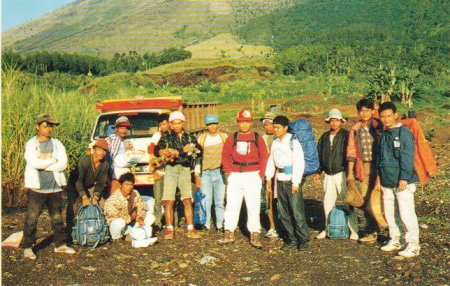 |
| Photo.1 Observation party for the Guntur campaign now departing for Puncak and Leren. The background is the Guntur volcano.w |
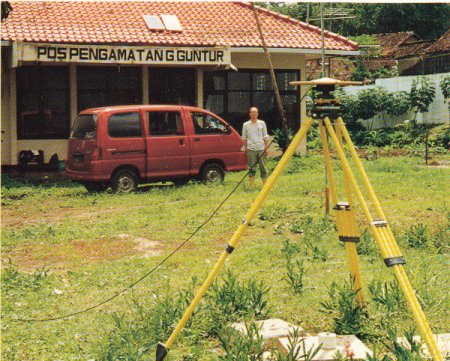 |
| Photo.2 GPS measurement at POS. Guntur network. |
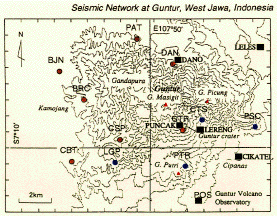 |
| Fig. 1. GPS network at Volcano Guntur. Solid squares are GPS points, (modified from Ishihara et al. (1996): Annuals, DPRI, 39B-1, 161-171.) |
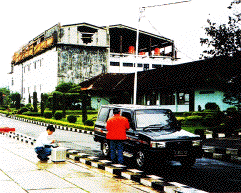 | 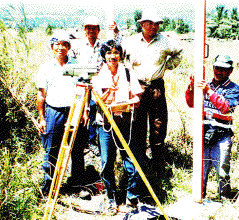 |
| Photo.3 Gravity measurement at Lembang gravity station. | Photo.4 Members of VSI and SVO leveling team at Bench Mark CKTD7 near Cipanas at the foot of Gunter Volcano on August 1996. |
 Å@
Å@
 Å@
Å@
